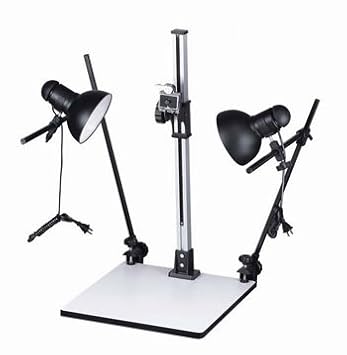Dutch Fred
Member
- Messages
- 13
- Reaction score
- 0
Hi,
I am a starting art photographer and want to take pictures of other peoples artworks and that of my own. I did my own research and have decided to go with Nikon.
I can’t afford a full frame camera yet, but a refurbished or second hand Nikon D7100 looks like it has everything I need to start with.
I want to have enough distance between the camera and the artwork so it can be lit properly from both sides by two Falcon Eyes softboxes of total 320 watt. They say these lights emit a total of 1600watt. Would these lights be sufficient for photographing artworks of regular size?
The works of art I want to put on a studio easel so I can take pictures of them from a tripod.
For the lens I still don’t have made up my mind. I’m a bit scared to buy a budget telelens or zoomlens like the 55-200mm DX VR or the 70-300mm VR because I read that they have barrel distortion. Is this true in your opinion or is this barrel distortion like some suggest a thing of the past? Having a telelens would allow me to be a bit more flexible with my tripod distance. If I buy a 50mm prime lens I’m worried that the distance between the lens and the artwork will not be enough so it can be lit properly by the softboxes.
My main focus is quality pictures that I can send to my clients or to a printstore that uses pigment colors for 300-400 dpi reproduction on fine art paper. I already own a calibrated monitor and I want to do my post processing in Lightroom.
Can anyone help me with choosing a good lens and lights for my studio setup?
Kind regards,
Fred
I am a starting art photographer and want to take pictures of other peoples artworks and that of my own. I did my own research and have decided to go with Nikon.
I can’t afford a full frame camera yet, but a refurbished or second hand Nikon D7100 looks like it has everything I need to start with.
I want to have enough distance between the camera and the artwork so it can be lit properly from both sides by two Falcon Eyes softboxes of total 320 watt. They say these lights emit a total of 1600watt. Would these lights be sufficient for photographing artworks of regular size?
The works of art I want to put on a studio easel so I can take pictures of them from a tripod.
For the lens I still don’t have made up my mind. I’m a bit scared to buy a budget telelens or zoomlens like the 55-200mm DX VR or the 70-300mm VR because I read that they have barrel distortion. Is this true in your opinion or is this barrel distortion like some suggest a thing of the past? Having a telelens would allow me to be a bit more flexible with my tripod distance. If I buy a 50mm prime lens I’m worried that the distance between the lens and the artwork will not be enough so it can be lit properly by the softboxes.
My main focus is quality pictures that I can send to my clients or to a printstore that uses pigment colors for 300-400 dpi reproduction on fine art paper. I already own a calibrated monitor and I want to do my post processing in Lightroom.
Can anyone help me with choosing a good lens and lights for my studio setup?
Kind regards,
Fred

